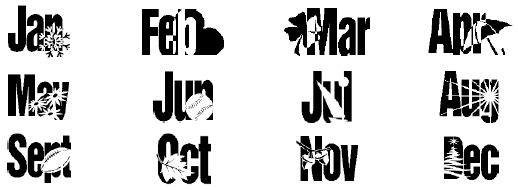
Some Ideas:

A “Calendar Worksheet” is provided in Section 10. It can be photocopied and filled in each month. It can also be used as the basis for calendar exercises. For example, the learner can fill in the numbers on the calendar grid. Alternatively, the tutor can fill in only a few numbers, so that the learner can fill in the blanks.
A “Daytime Schedule Worksheet” is also provided in Section 10. It can be used for planning activities during a particular day.
![]() Source:
Source:
Catherine Janossy, A Needs Survey & Program Description: Program Delivery
for the Developmentally Challenged Adult in Grey, Bruce and The Georgina Triangle.
Walkerton, ON: The Walkerton & District Literacy Council, pp. 49-50.
Frances Shannon. Teaching Basic Workplace Literacy Skills to Employees with Intellectual Disabilities: A Practical Guide to Assessment and Teaching Strategies. Orange, New South Wales, Australia: Western Institute of TAFE, Orange College, 1995.